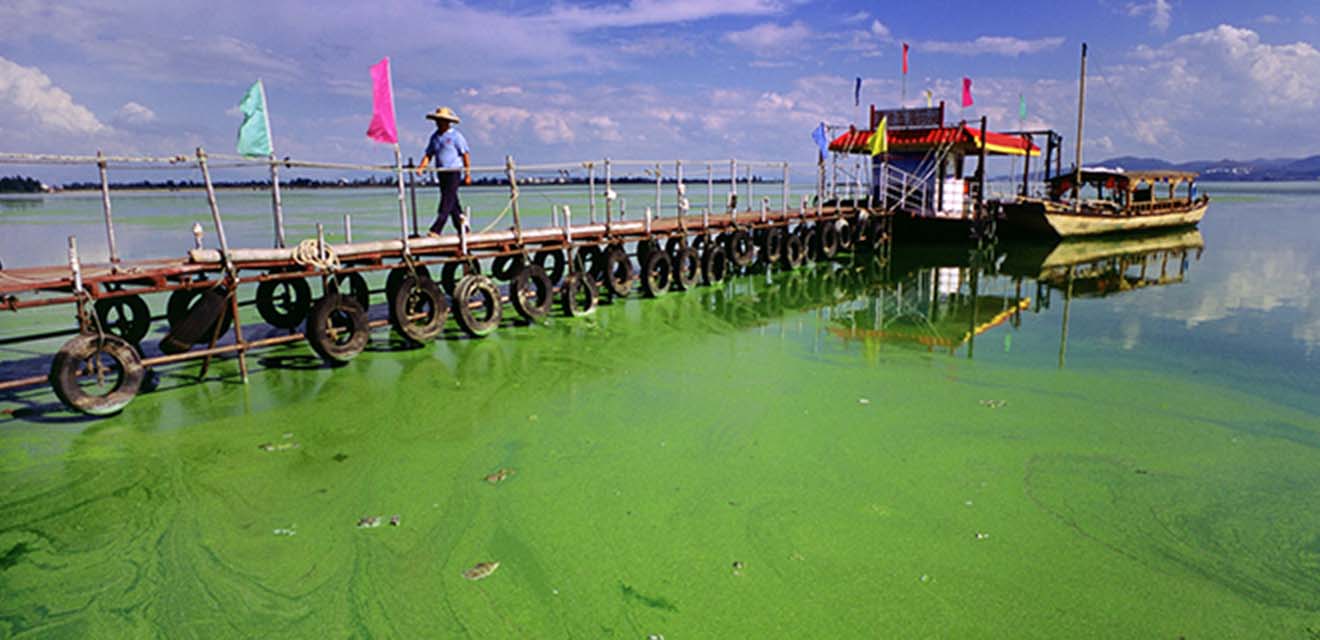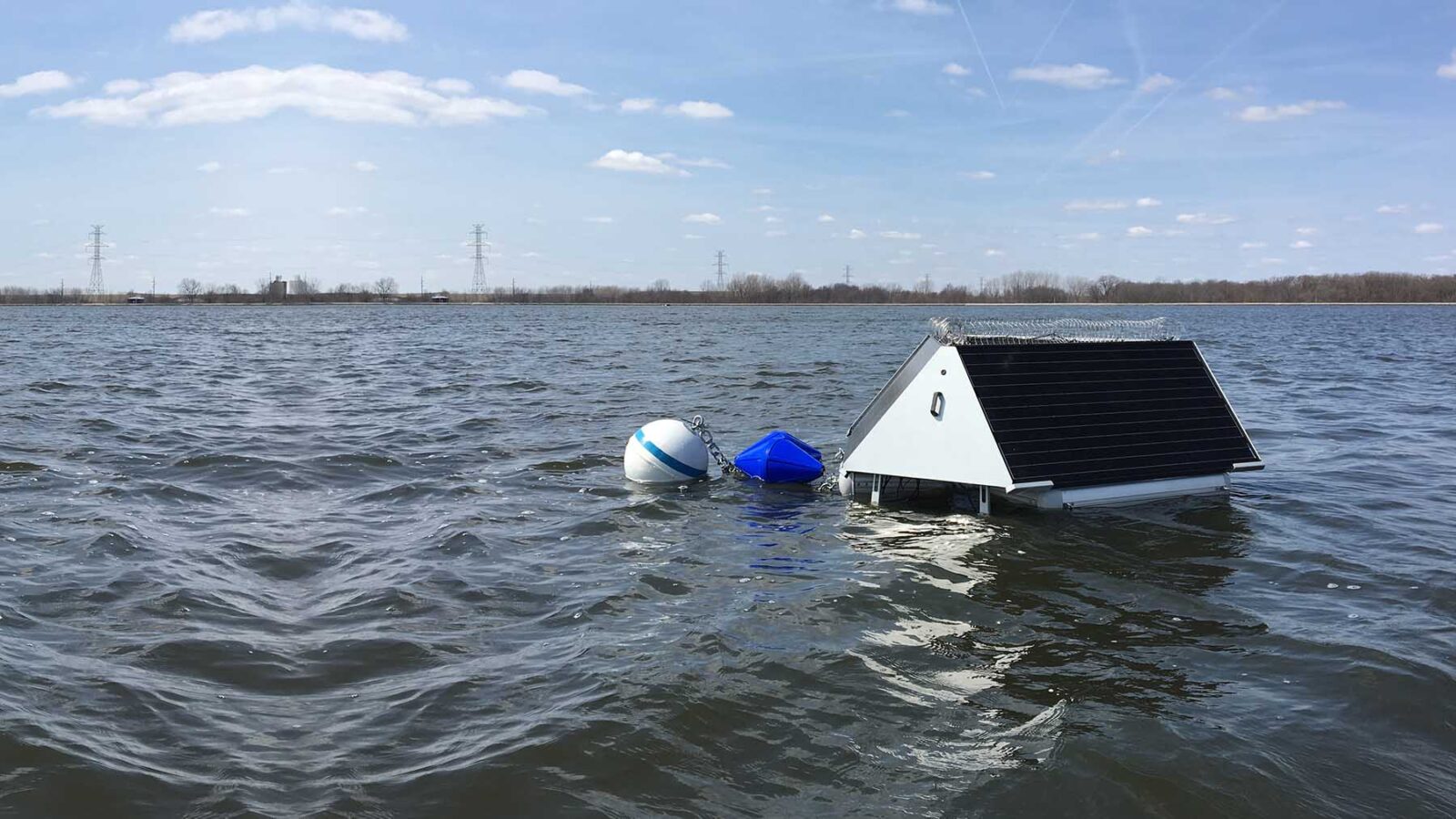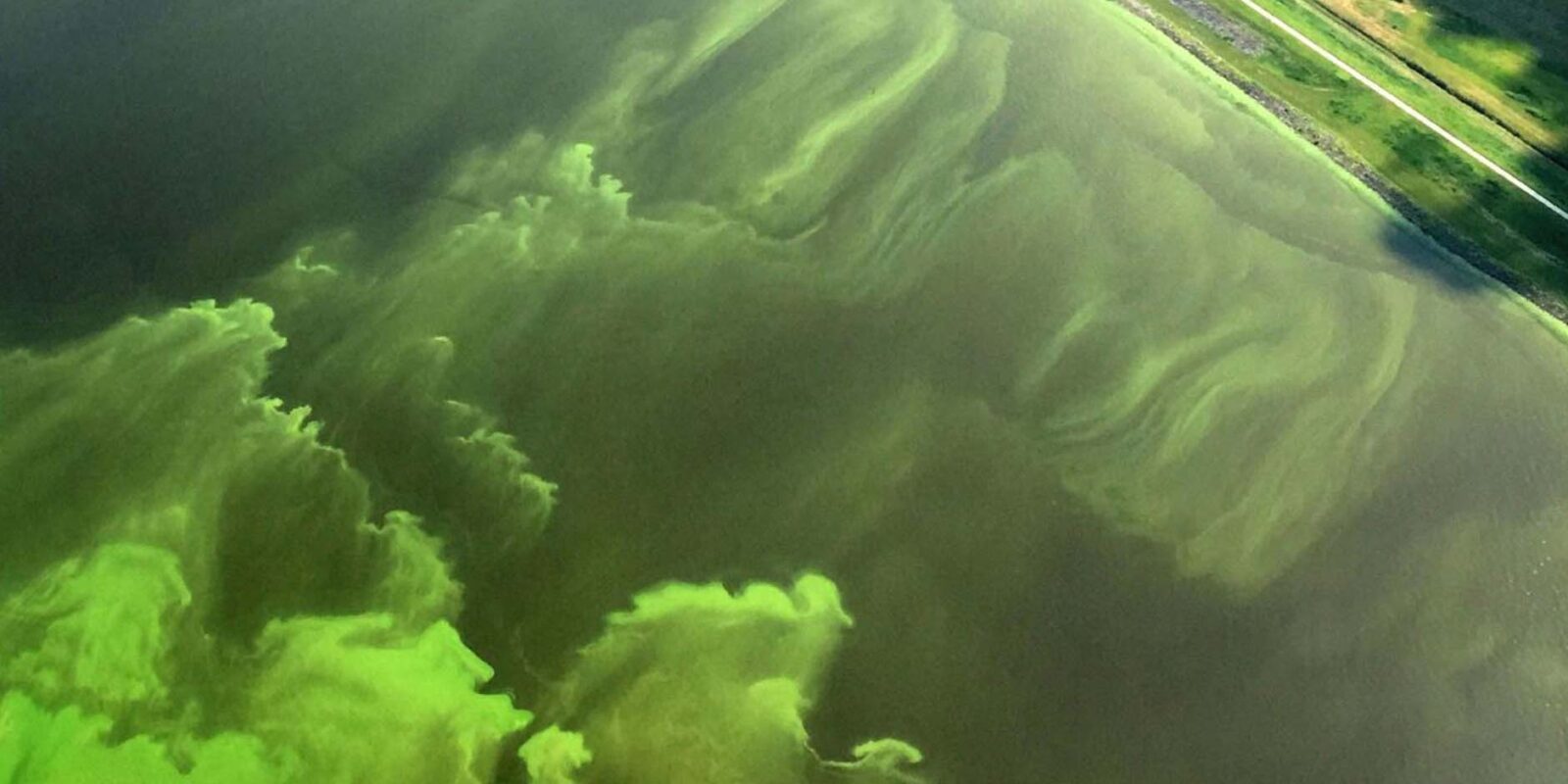Usage of chemicals in lake management dates back to 1939. With time and the advancement of science, its harmful effects were exposed.
It is not a secret that chemicals do more harm than good. Yet, it is still a commonly used method believed to diminish the impacts of algal blooms.
Commonly used copper sulfate is toxic to most aquatic species. According to the United States Environmental Protection Agency (EPA), copper is toxic to fish through binding to the gill membranes. By damaging the membranes, copper interferes with osmoregulation processes. The study of five Minnesota lakes reported that, after 50 years of copper sulfate treatment, lakes were “almost completely devoid” of benthic macroinvertebrates.
Proven negative effects of chemicals
Recent research proved that the negative effects of chemicals are not limited to harming the environment. They also contribute to the occurrence of harmful algal blooms. Copper sulfate, as an algaecide, is highly toxic to algae. It causes leakage of the cell content and release of toxins into the water.

“It’s not a very environmentally friendly way of dealing with the problem,” said James Douglass, Environmental scientist at Florida Gulf Coast University. With Florida leading the way, there is a long-awaited trend towards safer and more effective methods of algae management.
This month, Collier County Commissioner, Bill McDaniel revealed plans for a policy change. A new approach is to “work with the agencies, engage with agencies, to adjust away from the primary methodology of spraying chemicals as eradication”.
Need for green technologies
Keeping true to these words, FGCU’s Everglades Wetlands Research Park in Naples will install nine MPC-Buoy systems. Using LG Sonic ultrasound technology, the MPC-Buoy system effectively reduces 70-90% of algal blooms in large water reservoirs. It does so by creating a sound barrier near the water surface, that affects algae buoyancy and prevents it from photosynthesizing. Unlike chemicals, research institutions found no negative impacts of LG Sonic ultrasound technology on humans, zooplankton, fish, and other aquatic life.

“Every lake in Southwest Florida probably uses chemicals. Most of them use a chemical called copper sulfate. Well, copper sulfate is toxic, and copper is now the number 1 pollutant in Naples Bay because everyone is pouring copper sulfate in all these lakes,” said Dr. Mistch, director of the FGCU’s Everglades Wetlands Research Park in Naples.
Water bodies around the world are polluted with algal blooms, and now also with substances that were meant to mitigate them. It is time for a shift towards green and smart technologies, which are created to recover the ecosystem of the water body. Only when we begin to consider the long-term results and stop compromising the safety of the environment will we truly improve the quality of our surface waters.
